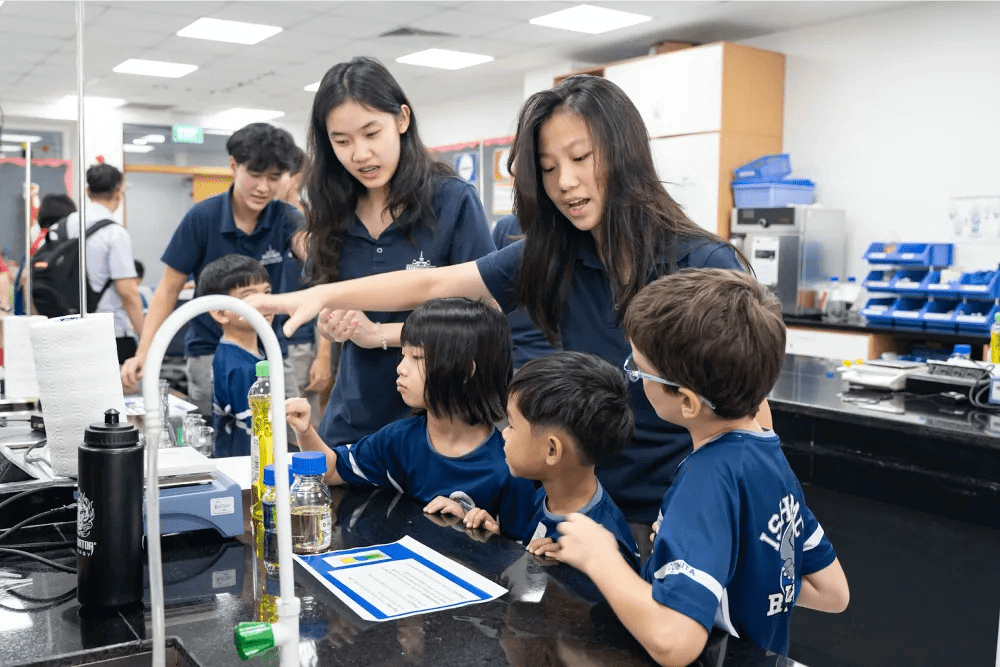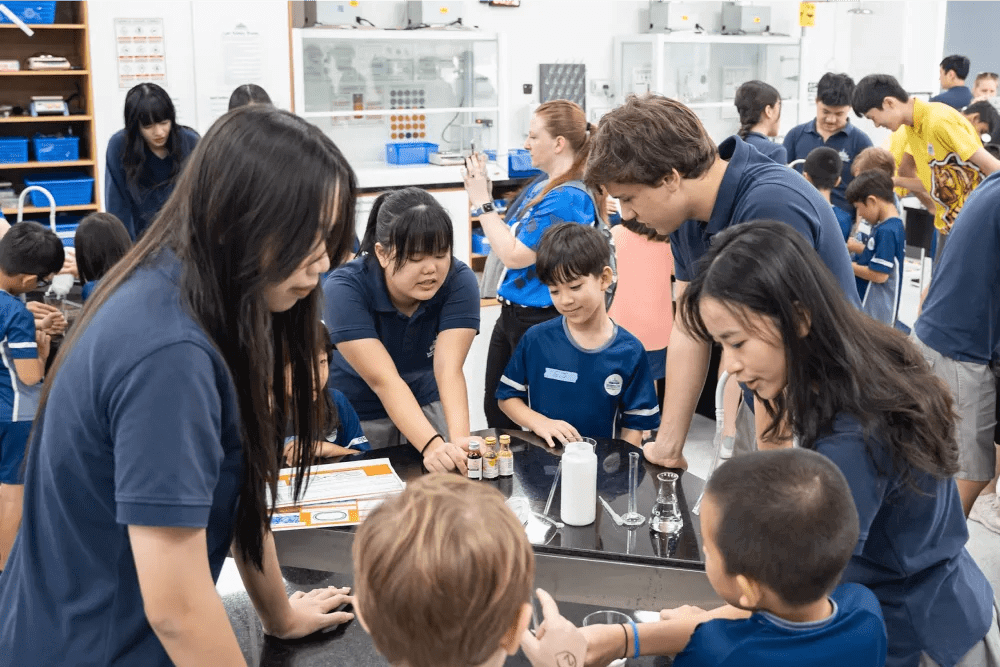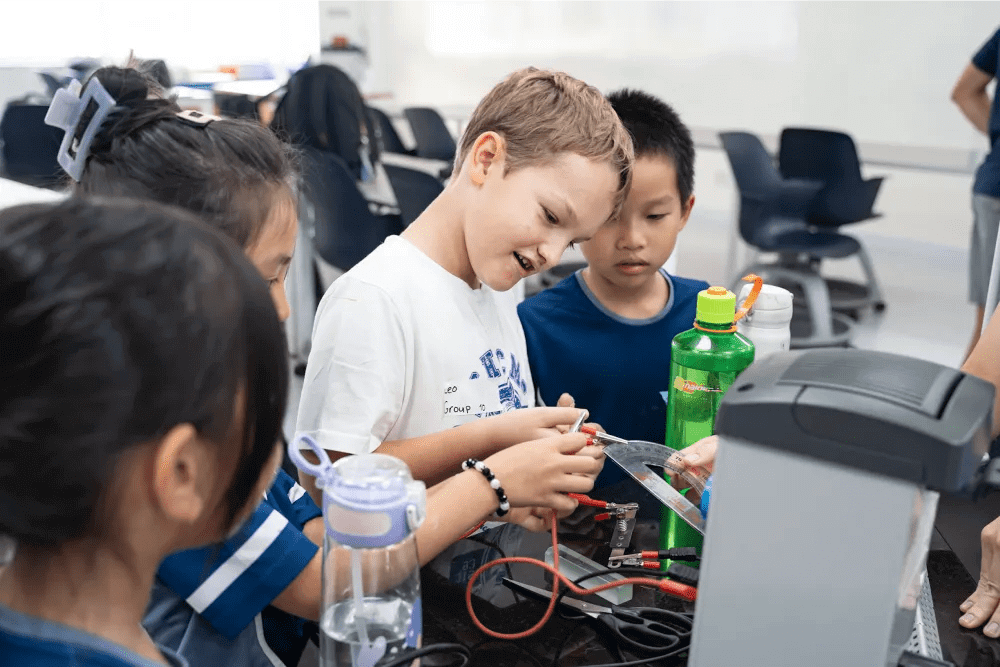STEM in Primary Schools: Essential Roles and Structures
In recent years, the integration of STEM (Science, Technology, Engineering, and Mathematics) in primary schools has emerged as a crucial educational initiative globally. This initiative seeks to equip young learners with foundational skills in problem-solving, critical thinking, and innovation from an early age.
STEM in primary schools prepares students for future academic pursuits and cultivates a deep-seated curiosity about the natural world and technological advancements.
This article explores the roles and structures necessary to effectively implement STEM education in primary settings, highlighting its significance in shaping the next generation of thinkers and creators.
What is STEM in Primary School?
STEM in primary schools stands for Science, Technology, Engineering, and Mathematics. This approach encompasses these essential fields to provide a cohesive learning experience. It goes beyond traditional subject boundaries, encouraging students to engage in collaborative, real-world projects. By combining these disciplines, STEM education fosters curiosity, critical thinking, and practical problem-solving skills essential for success in the 21st century.

STEM’s approach deepens students’ understanding of these fields and prepares them to tackle complex challenges by promoting higher-order cognitive skills such as analysis, synthesis, evaluation, and creation.
Moreover, STEM bridges the gap between academic learning and professional application, aligning educational goals with the demands of the modern economy.
Why is STEM Important in Early Childhood Education?
STEM in primary schools lays the groundwork for lifelong learning and development by facilitating critical skills and attitudes that prepare young learners for future challenges.
- Promotes Analytical Skills: STEM enables analytical thinking from an early age through hands-on exploration and problem-solving activities.
- Develops a Growth Mindset: Encourages resilience and perseverance by teaching that mistakes are opportunities for learning and improvement.
- Enhances Creativity and Teamwork: Nurtures creativity and collaboration skills necessary for future academic and professional endeavors.
- Provides Real-World Relevance: Connecting classroom activities with practical applications makes learning meaningful.

- Engages Natural Curiosity: Capitalizes on children’s innate curiosity to explore and understand the world around them.
- Fosters Innovation: Encourages innovative thinking and problem-solving, preparing children to become future innovators.
- Boosts Digital Literacy: Introduces technology early on, enhancing digital literacy, which is fundamental in today’s digital age.
- Promotes Confidence: STEM activities accommodate diverse learning styles and levels, boosting confidence and inclusivity among all students.
- Facilitates Inclusivity: Reduces diversity gaps by providing equal opportunities for all children to engage in STEM learning.
- Encourages Environmental Awareness: Cultivates a sense of responsibility towards the environment through STEM-focused activities
At ISHCMC, STEM activities for primary schools are intentionally designed to spark curiosity, enhance analytical thinking, and bridge classroom learning with real-world experiences.
3 Key Components for Students’ Success in STEM
Integrating STEM in primary schools effectively requires focusing on key components contributing to students’ success.
1. Develop a STEM Identity
Building a STEM identity involves boosting skills and attitudes integrating science, technology, engineering, and mathematics into students’ self-concepts and learning experiences.

Ways to support STEM identity skills include:
- Articulate the Process: Asking students to explain step-by-step how they created something promotes communication and logical thinking skills.
- Apply Knowledge: Encouraging students to predict outcomes using evidence and prior knowledge fosters critical thinking and problem-solving abilities.
- Reflect on Challenges: Discussing the most difficult aspects of a project and how they were overcome builds confidence and a mindset of persistence.
- Create and Share: Drawing and labeling their creations for display encourages community engagement and improves visual communication skills.
- Give Advice: Prompting students to guide peers on building their creations integrates critical thinking and communication skills across disciplines.
2. Achieve Technology Fluency
Technology fluency in primary education equips students with the skills to use technology to solve real-world problems creatively. It involves mastering arithmetic, understanding ratios, and developing computational and coding skills.

Like learning a language, technology fluency requires practice and applying STEM principles. Early hands-on experiences in STEM education develop technology fluency and boost confidence and proficiency in STEM fields. Students build a solid foundation for future academic and professional endeavors by persevering through challenges and finding innovative solutions.
3. Connect with STEM Mentors
Teachers, regardless of their own STEM expertise, can inspire and guide students by stimulating curiosity, embracing challenges, and posing open-ended questions that encourage deeper thinking.

By modeling a positive attitude towards STEM in primary schools and providing abundant hands-on opportunities, educators can instill a passion for lifelong learning and problem-solving in their students. These mentorship interactions enhance learning experiences and empower students to envision themselves as capable contributors to the STEM community.
How Teachers Can Support Effective STEM Learning Structures
Teachers must employ diverse instructional strategies to ensure effective STEM in primary schools that cater to different learning stages and needs.
Learning Convergent to Divergent
In STEM education, the balance between convergent and divergent learning is essential for comprehensive student development. Convergent learning involves direct, step-by-step instruction where all students follow the same process to achieve the same result.
This method ensures that every student acquires foundational knowledge and experiences success. For instance, when students build a hammer using specific materials, they learn the basic principle of creating a solid structure through bracing.

Once students grasp these fundamental concepts, they transition to divergent learning. Here, they apply their knowledge to open-ended challenges with multiple potential solutions.
An example is designing a bridge that spans a long distance and supports the weight of several cars, using principles learned from previous tasks. Students exploring various designs to meet the criteria will enhance creativity, problem-solving, and critical thinking.
Combining convergent and divergent learning strategies equalizes STEM in primary schools, providing all students with the necessary knowledge and opportunities to apply it innovatively.
Teachers should design STEM activities that build skills through convergent learning and demonstrate mastery and creativity through divergent learning. This dual approach ensures that students develop a robust STEM identity and technology fluency, which is vital for success in the 21st century.
The Process of Engineering Design
One of the most exciting parts of STEM and STEAM education is learning how to think like a real-world designer or engineer. The engineering design process is a structured approach that mirrors how real engineers solve problems, making it a valuable framework for STEM in primary schools.

Below are the 5 elemental steps:
- Step 1: Identify the Challenge
Define the problem clearly and ask questions to gain a deeper understanding. The teacher or students can initiate these questions/problems.
- Step 2: Brainstorm Solutions
Encourage students to imagine and brainstorm various solutions that might seem unconventional or challenging.
- Step 3: Prototype
Select a promising idea and develop a detailed plan, including drawing a model, gathering materials, and considering the design aspects. Based on this plan, create a prototype for testing.
- Step 4: Test and Improve
Evaluate the prototype to see if it works as intended. Analyze the results, identify areas for improvement, and make necessary adjustments. This iterative process continues until the design is optimized.
- Step 5: Explain the Design
Students must demonstrate and articulate how their design works, including revisiting the design features, confirming their effectiveness, and explaining how the solution addresses the original problem.
Exposure to STEM in Early Primary Age at ISHCMC!
The ideal STEM curriculum engages students early and consistently, ensuring a systematic and comprehensive approach throughout their schooling. As core subjects like reading, writing, and math are taught incrementally and regularly, STEM in primary schools must be structured to build upon each lesson, targeting students’ developmental needs and promoting a robust STEM identity and technology fluency.

At ISHCMC, our Primary School’s IB Primary Years Programme (PYP) for grades 1–5 epitomizes this ideal approach. ISHCMC’s PYP emphasizes inquiry-based learning, where students actively participate in their educational journey. They ask questions, explore concepts, and assess their knowledge, making learning dynamic, exciting, and relevant.
This program integrates various disciplines, encouraging students to be curious and engaged learners who understand how the world functions.
Apply for ISHCMC to provide your child with an education that builds a strong STEM identity and prepares them for the future. Join us in cultivating a generation of innovative thinkers and problem-solvers.





